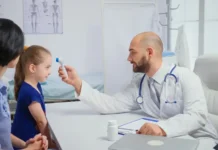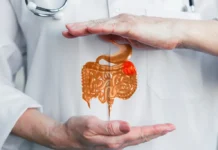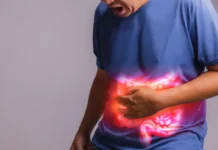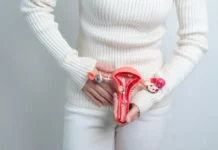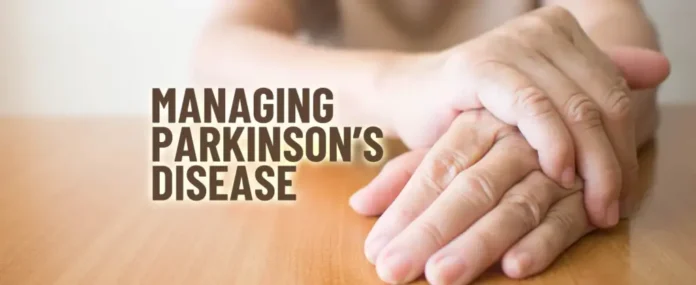Parkinson’s disease, often called Parkinson’s, is a chronic, degenerative disorder of the central nervous system that impacts both motor and non-motor functions. It progresses gradually, with initial symptoms such as tremors, rigidity, slowed movements, and difficulty walking.
As the disease advances, non-motor symptoms affecting cognition, behavior, sleep, and sensory systems become more prevalent. In the advanced stages, Parkinson’s disease and dementia become common.
Motor Symptoms and Their Causes
The primary motor symptoms of Parkinson’s disease result from the death of nerve cells in the substantia nigra, a region of the midbrain responsible for supplying dopamine to the basal ganglia. This cell death is associated with the aggregation of the protein alpha-synuclein into Lewy bodies within neurons. Collectively, these motor symptoms are referred to as Parkinsonism or Parkinsonian syndrome.
While the precise cause of Parkinson’s disease remains unclear, it is thought to be influenced by genetic and environmental factors. Individuals with a family history of the disease are at a higher risk, with certain genes identified as inheritable risk factors.
Environmental factors, such as exposure to pesticides, previous head injuries, and a history of trichloroethylene exposure, are also suspected to contribute. Surprisingly, caffeine and nicotine appear to have a protective effect.
Diagnosis and Prevalence
Diagnosis primarily relies on recognizing symptoms, with motor symptoms being the most common initial presentation. Neuroimaging, including magnetic resonance imaging and DaT scans to assess dopamine neuronal dysfunction, may be used to rule out other conditions.
Parkinson’s disease typically affects people over the age of 60, with about one percent of this demographic being affected. It is more common in males, with a ratio of approximately 3:2 compared to females. When the disease occurs before the age of 50, it is referred to as early-onset PD.
By 2015, Parkinson’s had affected 6.2 million people globally and led to approximately 117,400 deaths. The number of individuals with Parkinson’s disease over the age of 50 is expected to double by 2030. Life expectancy following a diagnosis ranges from 7 to 15 years.
Treatment for Parkinson’s disease
Regrettably, there is no known cure for Parkinson’s disease. Treatment primarily focuses on alleviating symptoms. Initially, medications like levodopa (L-DOPA), MAO-B inhibitors, and dopamine agonists are commonly prescribed.
As the disease progresses, the effectiveness of these medications diminishes, often accompanied by involuntary muscle movements. At this stage, combinations of medications and increased dosages may be required.
Dietary adjustments and certain forms of rehabilitation have shown promise in symptom management. For severe motor symptoms unresponsive to drugs, surgery involving the placement of microelectrodes for deep brain stimulation (DBS) can be considered. The evidence for treating non-movement-related symptoms, such as sleep disturbances and emotional issues, is less conclusive.
Historical Perspective of Parkinson’s Disease
The disease was named after James Parkinson, an English physician who wrote “An Essay on the Shaking Palsy” in 1817, providing the first comprehensive description of the disease. World Parkinson’s Day, observed on April 11th, uses the red tulip as a symbol for the disease in public awareness campaigns.
In summary, Parkinson’s disease is a complex and progressive neurological condition that impacts millions worldwide. While there is no cure, various treatment options aim to improve the quality of life for those affected. Understanding the underlying causes, symptoms, and available treatments is crucial to managing this challenging condition.
What is Parkinson’s disease?

Parkinson’s disease is a multifaceted neurological disorder that encompasses both motor and mood disturbances. This condition is characterized by its progressive nature, stemming from the insufficient production of dopamine, a vital neurotransmitter, within the human brain.
Typically, Parkinson’s disease is diagnosed in individuals around the age of 65. However, 1 in 10 cases presents in those under 45 years of age. This ailment is essentially a neurodegenerative disorder that primarily targets the dopamine-producing neurons, often referred to as “dopaminergic” neurons, residing in specific areas of the brain known as the substantia nigra.
Over time, Parkinson’s disease leads to the gradual deterioration of a portion of the brain, resulting in increasingly severe symptoms. Although most recognized for its impact on motor control, balance, and movement, it also influences sensory perception, cognitive function, and mental well-being, among other aspects.
Parkinson’s Disease Symptoms: Motor and Non-Motor Symptoms
Parkinson’s disease manifests with a range of symptoms, encompassing both motor and non-motor aspects. These symptoms evolve slowly and can vary among individuals due to the diversity of the disease. It’s important to understand the various facets of this condition.
Motor Symptoms:
- Tremor: A common early sign, often one-sided initially, typically occurring at rest. In about 80% of cases, individuals experience this resting tremor, which differs from essential tremors as it is present even when muscles are not in use.
- Bradykinesia (slowed movements): characterized by a sense of muscle weakness, even though actual strength remains, it results from issues with muscle control and is a fundamental diagnostic criterion for Parkinson’s disease.
- Rigidity: Muscles can become stiff, presenting as “lead-pipe rigidity,” a constant resistance to movement. “Cogwheel stiffness” combines tremor and lead-pipe rigidity, creating a jerky, stop-and-go movement pattern.
- Postural Instability: This causes an altered gait and balance, often leading to a hunched-over stance and shuffling strides. Turning while walking may require several steps.
Other motor symptoms include:
- Reduced blinking
- Micrographia (small, cramped handwriting)
- Drooling due to facial muscle control issues
- Hypomimia (mask-like facial expression)
- Dysphagia (difficulty swallowing)
- Hypophonia (soft speaking voice)
Non-Motor Symptoms:
Parkinson’s disease extends its impact beyond motor function. Non-motor symptoms are varied and can often precede motor symptoms, sometimes by several years.
- Autonomic Nervous System Symptoms: These include orthostatic hypotension (low blood pressure when standing), constipation, gastrointestinal problems, urinary incontinence, and sexual dysfunctions.
- Depression: Individuals with Parkinson’s may experience depression.
- Loss of Sense of Smell (Anosmia): A reduced ability to smell is common.
- Sleep Problems: These may involve periodic limb movement disorder, rapid eye movement (REM) behaviour disorder, and restless legs syndrome.
- Cognitive Impairments: Parkinson’s-related dementia can impact thinking, memory, and focus.
It’s essential to recognize that Parkinson’s symptoms are unique to each person, and they often begin on one side of the body, persistently affecting that side, even as symptoms spread to both sides. The progression is gradual, and early symptoms may be subtle or go unnoticed.
Tremors, bradykinesia, muscle rigidity, impaired posture, and a loss of automatic movements are key motor symptoms, while non-motor symptoms encompass autonomic issues, depression, anosmia, sleep disturbances, and cognitive changes. Early diagnosis is crucial to effectively managing the condition and improving the quality of life for those affected.
What are the causes of Parkinson’s disease?

Parkinson’s ailment is commonly characterized by the loss of nerve cells in a specific mental location called the substantia nigra, leading to a decrease in the vital neurotransmitter dopamine. This dopamine deficit is a crucial factor in the emergence of Parkinson’s signs and symptoms, particularly those related to motor characteristics.
The specific motive for this nerve cell loss stays elusive, with professionals attributing it to an aggregate of genetic and environmental factors. The multifaceted nature of the sickness is contemplated in terms of the different factors contributing to its improvement.
Genetic Factors:
While researchers have pinpointed specific genetic mutations that could result in Parkinson’s disease, they may be incredibly uncommon and usually manifest in cases with a strong family history of the situation. Certain genetic variations can also increase the danger of developing Parkinson’s, although with an incredibly low degree of hazard related to every genetic marker.
Environmental Triggers:
Exposure to positive pollutants or environmental factors has been related to an improved threat of growing Parkinson’s disease, albeit with a low standard of risk. Factors involving pesticide publicity are among the potential triggers.
Pathological Changes in the Brain:
A variety of adjustments inside the brains of people with Parkinson’s ailment have been determined, even though the underlying motives for these changes remain doubtful. These changes consist of the presence of microscopic markers known as Lewy bodies and clumps of unique materials within brain cells.
Among the substances discovered within Lewy bodies, alpha-synuclein, a taking-place protein, is assumed to hold widespread significance. It exists in a clumped form inside Lewy bodies, rendering it immune to cellular breakdown. This protein aggregation is a focal point of Parkinson’s disorder studies, with clumped alpha-synuclein detected within the spinal fluid of people who later develop the condition.
It is crucial to notice that at the same time as various risk elements are diagnosed, along with exposure to insecticides, the causes of Parkinson’s disorder are normally genetic. When Parkinson’s sickness is not linked to genetics, it’s classified as “idiopathic,” indicating an unknown purpose. This underscores the complexity of the circumstances, with a multitude of factors potentially contributing to its development.
Types of Parkinsonism:
While Parkinson’s disorder is the most common and not unusual form of Parkinsonism, there are associated situations that resemble Parkinson’s, which stem from awesome reasons. These include:
- Familial Parkinson’s Disease: accounting for approximately 10% of cases, this form is hereditary and linked to specific genes. Certain genetic mutations can also result in unique features and early-onset Parkinson’s.
- Idiopathic Parkinson’s Disease: It is believed to occur due to problems with the protein alpha-synuclein, which undergoes a process called protein misfolding. Misfolded proteins, including the formation of Lewy bodies, lead to toxic effects and cell damage. This mechanism is a common factor in several neurodegenerative disorders.
- Induced Parkinsonism: While not actual Parkinson’s, conditions like this exhibit Parkinson’s-like symptoms. Possible reasons consist of:
- Medications: Some drugs can induce parkinsonism, with signs regularly reversible upon discontinuation.
- Encephalitis: Inflammation of the brain can result in parkinsonism.
- Toxins and Poisons: Exposure to substances like manganese dust, carbon monoxide, welding fumes, or specific pesticides may cause Parkinsonism.
- Brain Injuries: Repeated head injuries, regularly seen in excessive-impact sports, can result in post-disturbing parkinsonism.
Understanding the variety of factors contributing to Parkinson’s sickness and associated situations is vital for a correct prognosis and effective control.
Who does Parkinson’s disease affect?
Parkinson’s disease typically manifests in individuals over the age of 50, although it can also affect those under 40, albeit rarely. Moreover, it displays a slightly higher prevalence in individuals designated male at birth (DMAB) than in those designated female at birth (DFAB).
While Parkinson’s is commonly an age-related condition, it can, in exceedingly rare instances, emerge in adults as young as 20, particularly if there’s a familial history of the disease.
Prevalence and Risk Factors:
Parkinson’s disease ranks second among age-related degenerative brain conditions and stands as the most common motor-related brain disorder, affecting at least 1% of people over 60 globally. Factors contributing to the risk of developing Parkinson’s include:
- Age: Parkinson’s primarily emerges in middle or late life, with the risk increasing with age, typically around 60 or older. Genetic counseling might be considered for young individuals diagnosed with the disease.
- Heredity: Having a close family member with Parkinson’s elevates the risk, although the overall risk remains relatively low unless multiple family members have the condition.
- Gender: Men are at a higher risk of developing Parkinson’s disease compared to women.
- Exposure to Toxins: Continuous exposure to herbicides and pesticides may slightly elevate the risk.
How Parkinson’s Disease Impacts the Body
Parkinson’s disease leads to the deterioration of the basal ganglia, a specific region in the brain. This deterioration triggers a significant shift in brain chemistry, primarily due to the deficiency of dopamine, a critical neurotransmitter.
Dopamine plays a pivotal role in fine-tuning muscle movements, and its depletion contributes to the characteristic symptoms of Parkinson’s disease, including slowed movements and tremors.
As the disease advances, symptoms intensify, potentially affecting brain functions and causing dementia-like symptoms and depression.
Parkinson’s Disease vs. Parkinsonism:
Parkinsonism serves as an umbrella term encompassing conditions with symptoms akin to Parkinson’s disease, such as multiple system atrophy or corticobasal degeneration.
Stages of Parkinson’s ailment:
Parkinson’s illness progresses progressively over the years, and its staging system has advanced. The Movement Disorder Society-Unified Parkinson’s Disease Rating Scale (MDS-UPDRS) is the primary device for assessing the situation, examining four key regions:
- Non-Motor Aspects of Daily Living: This section evaluates non-motor signs like intellectual fitness issues, aches, and fatigue.
- Motor Aspects of Daily Living: It assesses the impact on motion-associated duties and talents.
- Motor Examination: This phase examines motion-related outcomes, including speech, stiffness, gait, and tremors.
- Motor Complications: It gauges the impact of Parkinson’s signs on everyday lifestyles and day-by-day routines.
Work and Parkinson’s Disease:
Work stays possible for many individuals with Parkinson’s, often with changes to the workplace, flexible hours, and medicine management. In Australia, it’s far more unlawful for employers to discriminate against personnel based on incapacity.
Mental health and Parkinson’s:
Anxiety and depression are common among individuals with Parkinson’s disease, affecting approximately half of them. Apathy, or a lack of interest in activities, can also result from low dopamine levels and should be distinguished from laziness. Mental health symptoms need separate treatment, and professional help is available.
Relationships and sex:
Parkinson’s disease can impact sexual desire, performance, and satisfaction. Medications that substitute for dopamine may trigger preoccupation with sexual thoughts. Consult a doctor for medical options or seek professional counseling.
Young Onset Parkinson’s Disease (YOPD):
YOPD refers to a diagnosis before the age of 50 and presents with distinctive features, including slower disease progression, abnormal movements (dyskinesia), and involuntary muscle contractions (dystonia). If diagnosed with YOPD, it’s natural to have concerns about personal, family, and work life, but numerous support groups are available for assistance.
Diagnosis and Management of Parkinson’s Disease

Although Parkinson’s disease remains without a cure, treatment options are diverse, encompassing medications, lifestyle adjustments, and even surgical interventions. While Parkinson’s itself is not directly fatal, the complications it gives rise to can be severe, with the Centers for Disease Control and Prevention (CDC) ranking these complications as the 14th leading cause of death in the United States.
To thrive while living with Parkinson’s disease, it’s crucial to understand the disease and its progression. People with Parkinson’s can enjoy a good quality of life by collaborating with their doctors and adhering to recommended therapies, primarily utilizing dopaminergic medications. These medications are vital because they address the insufficient dopamine levels in the brain, often due to damage to neurons in the substantia nigra.
Diagnosis:
It’s essential to note that motor symptoms of Parkinson’s typically manifest later in the course of the disease, occurring only after 60% to 80% of substantia nigra neurons have already been compromised. In individuals with Parkinson’s, Lewy bodies, which consist of abnormal alpha-synuclein, are found within the substantia nigra neurons.
The diagnosis of Parkinson’s disease relies mostly on clinical assessment, where healthcare providers evaluate symptoms, inquire about medical history, and may perform certain diagnostic and lab tests, primarily aimed at excluding other conditions or causes. However, these blood tests are generally unnecessary unless patients show resistance to Parkinson’s disease treatment, which could indicate an alternative medical condition.
Management and Treatment:
While there is no cure for Parkinson’s disease at present, various methods are available to alleviate the primary symptoms and enhance quality of life. The effectiveness of treatments may vary from person to person, contingent on their unique symptoms and response to specific therapies. Medications constitute the primary approach to managing the disease.
Surgery presents a secondary treatment option involving the implantation of a device that administers a mild electrical current to a part of the brain, known as deep brain stimulation. Additionally, there are experimental treatments, such as stem cell-based therapies, although their accessibility can be limited and they may not be suitable for everyone with Parkinson’s disease.
Medications and Treatments:
Medication treatments for Parkinson’s disease can be categorized into two main groups: direct treatments aimed at the disease itself and symptom treatments focused on specific effects of the disease. These medications act in various ways:
- Dopamine Boosters: Medications like levodopa increase dopamine levels in the brain. Although effective, long-term use may result in diminishing effectiveness and side effects.
- Dopamine Agonists: These drugs mimic dopamine’s effect and are more commonly used in younger patients to delay levodopa initiation.
- Dopamine Metabolism Blockers: Medications blocking dopamine breakdown can enhance dopamine availability, primarily in the early stages.
- Levodopa Metabolism Inhibitors: These medications extend levodopa’s effectiveness by slowing its metabolism, but they require careful use.
- Adenosine Blockers: Medications that block adenosine use in certain cells can complement levodopa treatment.
Moreover, several medications target specific Parkinson’s symptoms, including sexual dysfunction, fatigue, sleep problems, depression, dementia, anxiety, and hallucinations.
- Deep Brain Stimulation: Surgical intervention, called deep brain stimulation, delivers mild electrical currents through an implanted device to specific brain regions. It’s a reversible alternative to intentionally scarring malfunctioning sides of the brain tissue, which was practiced in the past.
- Experimental Treatments: Ongoing research explores treatments like stem cell transplants, neuron-repair therapies, gene-targeted treatments, and gene therapies to manage Parkinson’s disease. Availability may vary.
Complications and Side Effects:
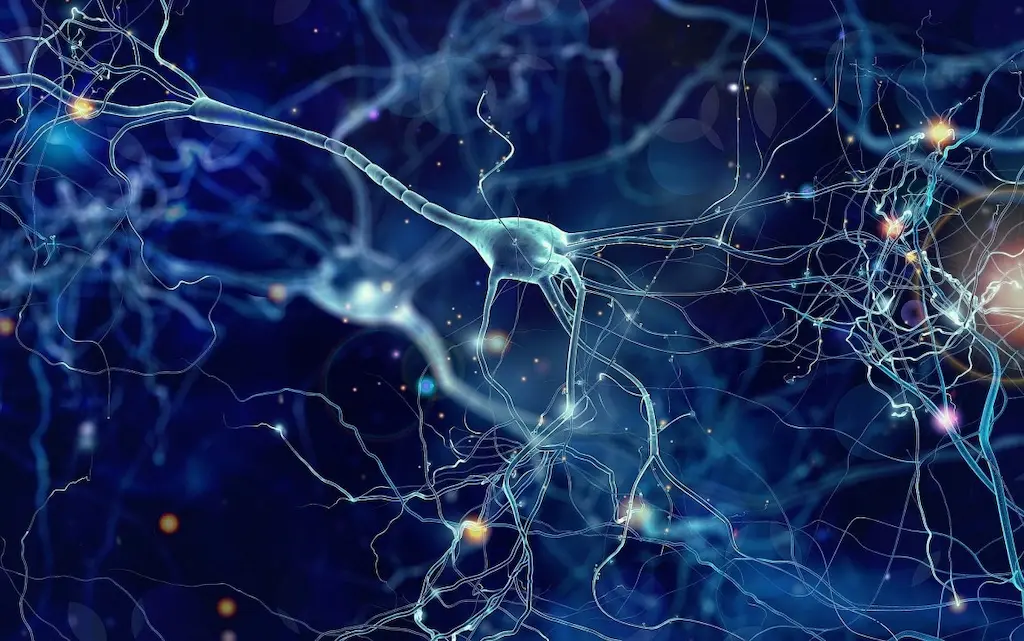
The complications and side effects related to Parkinson’s disease treatments depend on several factors, including the treatment itself, the disease’s severity, and overall health. Healthcare providers are best equipped to explain the likely side effects and complications and suggest strategies to mitigate their impact on daily life.
Proactive Measures:
It’s crucial to emphasize that Parkinson’s disease cannot be self-diagnosed or self-managed. Seeking medical consultation is essential for proper diagnosis and care.
Recovery and Treatment Duration:
The recovery period and treatment outcomes for Parkinson’s disease vary depending on treatment type, disease severity, and individual factors. Healthcare providers are the primary source for personalized information about expected treatment outcomes and potential recovery timelines.
Complications:
Parkinson’s disease is often accompanied by various complications, which may include cognitive difficulties, depression, emotional changes, swallowing and eating issues, sleep disturbances, bladder problems, constipation, blood pressure fluctuations, smell dysfunction, fatigue, pain, and sexual dysfunction.
Prevention:
Parkinson’s disease results from genetic or unpredictable causes, and it is not preventable. While certain occupations, like farming and welding, are associated with higher risk factors for Parkinsonism, not everyone in these professions develops the condition.
Since the cause of Parkinson’s remains unknown, there are no established prevention methods. Some research has suggested that regular aerobic exercise might reduce the risk of Parkinson’s, while caffeine consumption, found in coffee, tea, and cola, might be associated with a lower risk. However, the protective effects of caffeine require further investigation to determine a definitive link.
Managing Parkinson’s disease progression:
Parkinson’s disease is a degenerative condition, meaning its impact on the brain worsens over time. This progression, however, usually unfolds gradually. Most individuals with Parkinson’s maintain a typical lifespan.
In the early stages, you’ll require minimal to no assistance and can continue to live independently. As symptoms advance, medications become essential to mitigate their impact. Most medications, especially levodopa, can be quite effective once the optimal dosage is determined.
While most symptoms are manageable with treatment, their efficacy diminishes as the disease progresses. Maintaining independent living also becomes increasingly challenging as the condition worsens.
Duration and Outlook:
Parkinson’s disease, being non-curable, persists throughout one’s life. However, it’s important to note that while Parkinson’s is not fatal on its own, its symptoms and effects may contribute to other health conditions. Over the years, the average life expectancy for individuals with Parkinson’s disease has increased substantially, rising by about 55% since 1967. On average, this condition typically affects life expectancy by just a few years, influenced by various factors, including life expectancy in your region and the age at which you receive a diagnosis.
Self-Care and Management:
If you have Parkinson’s disease, the most effective strategy is to heed your healthcare provider’s guidance on self-care.
- Medication Compliance: Taking prescribed medications diligently is crucial, as it significantly influences symptom management. If you encounter side effects or perceive reduced medication effectiveness, promptly discuss these concerns with your provider.
- Regular Provider Visits: Adhering to the schedule your healthcare provider establishes for check-ups is vital for effectively managing your condition and identifying the right medications and dosages.
- Symptom Recognition: Don’t disregard or avoid symptoms, as many can be addressed either by treating the condition or targeting the symptoms themselves. Early intervention can make a substantial difference in mitigating symptom progression.
When to Seek Medical Attention:
Your healthcare provider can furnish you with guidelines on when to seek medical care or head to the emergency room. Generally, it’s advisable to seek care after experiencing a fall, particularly if you lose consciousness or sustain injuries to your head, neck, chest, back, or abdomen.
Frequently Asked Questions:
- Parkinson’s Disease Causes: The precise causes of Parkinson’s disease remain uncertain, with around 10% of cases being genetic and inherited from parents. The remaining 90% are considered idiopathic, indicating they occur for reasons yet unidentified.
- Early Warning Signs: Early indicators of Parkinson’s disease encompass both motor symptoms like slow movements, tremors, and stiffness, as well as non-motor symptoms. The latter can manifest years or even decades before motor symptoms become apparent and may include autonomic nervous system symptoms, loss of smell, and sleep disturbances.
- Is Parkinson’s disease fatal? Parkinson’s disease itself is not fatal. However, it can contribute to or exacerbate other conditions that may lead to fatalities.
- Curability of Parkinson’s Disease: Parkinson’s disease is not curable, but it is treatable. Numerous treatments can be highly effective, potentially delaying the progression and onset of severe symptoms.
- Contagiousness of Parkinson’s Disease: Parkinson’s disease is not contagious and cannot be transmitted from one person to another.



